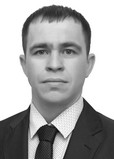Stimulating kinesiological potential of senior residents of Yugra north through Nordic walking practices
Фотографии:
ˑ:
A.Yu. Nikolaev1
L.E. Zelenina1
Dr. Biol., Professor S.I. Loginov1
PhD, Associate Professor A.A. Snigirev1
1Surgut State University, Surgut
Objective of the study was to identify the ways to correct the low level of daily physical activity and sedentary behavior of senior women with the help of the author's methodology of Nordic walking (based on a comparative analysis).
Methods and structure of the study. An educational experiment was aimed to increase the low level of physical activity of the subjects. Sampled for the experiment were the 60-64 year-old females, who were divided into 2 groups: Experimental Group (EG) (n=20), practicing the author’s Nordic walking 3 times a week for 50 min, and Control Group (CG) (n=19), practicing normal walking according to the same protocol. The training sessions lasted 24 weeks and were held in the open air, and at an air temperature below 20 °C - indoors. The subjects’ physical fitness level was assessed using a physical fitness test for senior people. In order to determine the three psychological needs of the senior women, we used the the Psychological Need Satisfaction in Exercise (PNSE) scale. The express assessment of their health status was made based on the survey results analyzed using the SF-36 test "Quality of Life".
Results of the study and conclusions. The physical fitness test data revealed positive changes in both groups, however, the Nordic walking classes had a stronger effect on the level of physical fitness, motivation and quality of life.
Therefore, regular Nordic walking practices had a stimulating effect on the development of kinesiological potential of the elderly women. This clearly indicates that this potential can and should be stimulated and, figuratively speaking, recharged at any age and at any stage of ontogenesis, and even in the elderly (third) age.
Keywords: Nordic walking, kinesiological potential, elderly women, physical fitness, quality of life.
References
- Bal'sevich V.K. Dvigatelnaya aktivnost kak fenomen kineziologicheskogo potentsiala cheloveka [Motor activity as phenomenon of human kinesiological potential]. Bereginya 777 Sova. 2013. no.1 (16). pp. 172-177.
- Bal'sevich V.K. Ontokineziologiya cheloveka [Human Ontokinesiology]. Moscow: Teoriya i praktika fizicheskoy kultury, 2000, 274 p.
- Bal'sevich V.K. Ocherki po vozrastnoy kineziologii cheloveka [Essays on developmental kinesiology in man]. Moscow: Sovetskiy sport publ., 2009, 220 p.
- Bal'sevich V.K. Fenomen fizicheskoy aktivnosti kak sotsialno-biologicheskaya problema [Phenomenon of physical activity as socio-biological problem]. Voprosy filosofii. 1981. # 9.pp. 78-89.
- Loginov S.I. Fizicheskaya aktivnost: metodyi otsenki i korrektsii [Physical activity: assessment and correction methods]. Surgut: SurSU publ., 2005. 342 p.
- Novik A.A., Ionova T.I. Rukovodstvo po issledovaniyu kachestva zhizni v meditsine [Guide to study of quality of life in medicine]. St. Petersburg: Neva; M.: OLMA-PRESS Zvezdny mir publ., 2002. 320 p.
- Poletaeva A., Refalyuk-Buzovskaya E. Skandinavskaya hodba. Zdorove legkim shagom [Nordic walking. Health is an easy step]. St. Petersburg: Piter publ., 2013. 82p.
- Bennie J. A., Chau J. Y., van der PloegH. P. [et al.The prevalence and correlates of sitting in European adults - a comparison of 32 Eurobarometer-participating countries. Int. J. Behav. Nutr. Phys. Act. 2013. V. 10. Available at: .gov/pmc/articles/ PMC3847463/ (date of access: 20.05. 2018).
- Biernat E. P. Tomaszewski Socio-Demographic and Leisure Activity Determinants of Physical Activity of Working Warsaw Residents Aged 60 to 69 Years. Journal of Human Kinetics. 2011. V. 30. P. 173–181. DOI: 10.2478/v10078-011-0085-y.
- Catela D., Gonçalves C., Santa P. [et al. Elderly women’s life styles and levels of physical activity: a pilot study. Revista da UIIPS – Unidade de Investigação do Instituto Politécnico de Santarém. 2017. V. 5. no. 2. pp. 157–162. ISBN: 2182-9608.
- Hurtig-Wennlöf A., Hagströmer M., L. Olsson The International Physical Activity Questionnaire modified for the elderly: aspects of validity and feasibility. Public Health Nutrition. 2010. V. 13. no. 11 pp. 1847–1854. DOI: 10.1017/S1368980010000157.
- Kantaneva M. Original Nordic Pole Walking. Tallinn: pad-centre, 2007. 124 p.
- Morris J. D. A comparison of regression prediction accuracy on several types of factor scores. American Educational Research Journal. 1979. V. 16. pp. 17–24.
- Rikli R.E., Jones J. C. Senior Fitness Test Manual. 2nd ed. Champaign, IL: Human Kinetics, 2013. 200 p.
- Wilson P. M., Rogers W. T., Rodgers W. M., Wild T. C. The Psychological Need Satisfaction in Exercise Scale. Journal of Sport & Exercise Psychology 2006. V. 28. no. 3.pp. 231–251. DOI: https://doi.org/10.1123/jsep.28.3.231.



 Журнал "THEORY AND PRACTICE
Журнал "THEORY AND PRACTICE